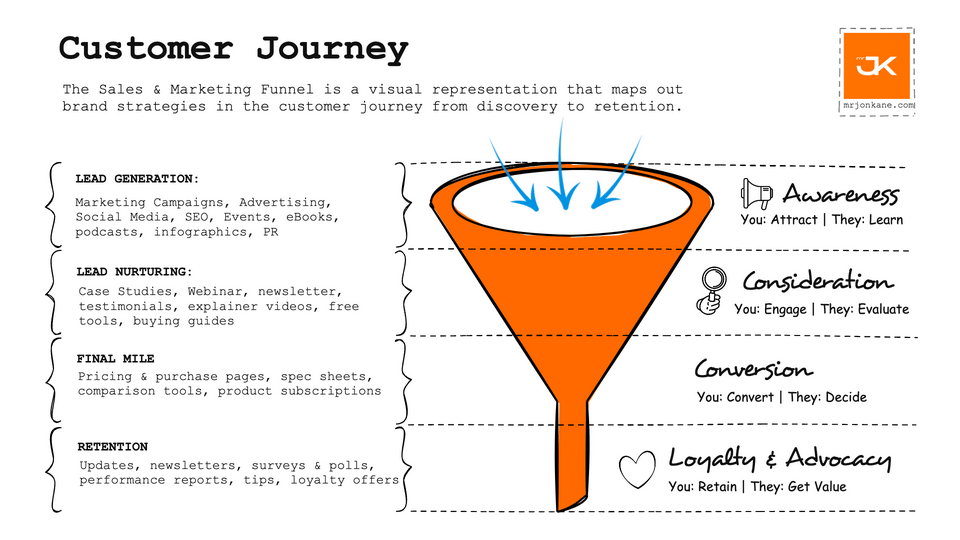A story I often come back to with my daughter, is of the 'Tortoise and the Hare'. It's a timeless fable that can be applied to many areas of life. I can see her eyes roll, not another “lesson” from dad! But the truth is, it’s a story that resonates with who I am on so many levels, it speaks to my philosophy of building sustainable value instead of chasing immediate wins. Which is why I love to focus on the deeper narratives we can build in Brand Marketing.
It still amazes me how many people in business still don't understand the core differences between marketing and advertising, and would you believe there are still business owners who think they don't need either? That's a story for another time. So now, grab a cushion and enjoy my version of the Tortoise and the Hare.
TL;DR Don't want to read the rest? Available now via Podcast or YouTube.
Once upon a time, in a lush forest where ancient trees intertwined with the songs of birds, there lived a Tortoise and a Hare. The Hare, with his sleek, soft fur and long, bounding legs, was known throughout the land as the swiftest creature. The Tortoise, on the other hand, carried her home on her back and moved with the patience of the earth itself, embodying the very essence of steadiness and resolve.
One radiant morning, the Hare, brimming with confidence, proposed a race. He sought to prove once and for all that speed was the supreme virtue in their world. Nobody dared to challenge the Hare. But then, the Tortoise, with a gentle smile that held the wisdom of the ages, plodded forward and humbly accepted the challenge.
As dawn broke the following day, the animals gathered along the winding course which ran past their homes through the forest, all buzzing with anticipation. The race began, and true to his reputation, the Hare dashed forward with incredible speed, quickly leaving the Tortoise behind. Confident and unbothered by the notion of defeat, the Hare didn't see the need to engage with the onlookers or enjoy the journey; his eyes were fixed solely on the victory ahead.
Meanwhile, the Tortoise, moving at her own steady pace, savored every moment of the race. She stopped to chat with the animals along the path, sharing kind words and listening to their stories. These simple acts of kindness endeared her to the forest's inhabitants, who began to view the Tortoise not just as a competitor, but as a friend.
The Hare, taking shortcuts along the way, reached the finish line in what felt like a blink of an eye. Only he found it eerily silent. The victory he had envisioned, filled with cheers and admiration, was nowhere to be found. He had crossed the finish line so quickly that nobody had arrived to witness it; the crowd was now following behind the Tortoise, accompanying her on the journey.
As the Tortoise neared the finish line, she was greeted with a resounding cheer from the gathered crowd, who had followed her, drawn by the warmth of her character and the strength of her spirit. The Tortoise may have come in second, but she was celebrated like a true champion, surrounded by friends and admirers.
In that moment, the Hare understood. The race, with its singular focus on reaching the end first, had offered only a fleeting thrill, a hollow victory that echoed in the emptiness of his moment of triumph. The Tortoise, in embracing the journey itself, had garnered the true prize: she had captured the hearts of those around her, earning a far greater victory.
There are so may ways this can be interpreted from a business perspective, but imagine for moment, that our Hare is the founder, focussed only his competitors weaknesses and his own prowess. He'll do anything to win and fails to recognize who his customers actually are. He doesn't care to learn who they are, intent on just shouting about his products at every opportunity he can. He's built products that he thinks everyone wants to buy, but he never stopped to ask why. He values hard work and tireless hustle but he's not very strategic... it's all eyes on the prize.
The Tortoise on the other hand is someone who works smart and listens. She is someone who builds from the ground up with a purpose. This is someone who builds a community around what they do and understands the culture, is embedded and backed by the culture and is able to influence culture from the inside. She's building value.
Do you get the Story?
A story breaks about the holy grail being discovered in a small English village but nobody knows who actually found it. You and one other journalist from the opposition media are the first on the scene. He's sitting in his car Googling for information and trying to connect with people on Facebook who live in the area. Your in the cosy local pub talking with the chatty Publican as he pulls you a pint of good ale.
You get the story. Sometimes it's better to pull levers than push buttons to get results.
Pour me another pint!
Ok before we delve deeper lets just do a refresher on the differences between Brand Marketing, Direct Marketing and Advertising.
Direct marketing communicates directly with targeted customers to generate a response or a transaction. It can be highly personalized and it's designed to prompt immediate action, such as a purchase, subscription, or to visit a website. Direct marketing comes through various channels, such as:
Email marketing
Direct mail (brochures, postcards, catalogs)
Telemarketing
SMS messaging
Targeted online display ads
The key characteristics of direct marketing include measurable responses, personalized communication, and a direct call to action. It's particularly effective and immediate because it's based on knowing something about you already. It's usually linked to a key marker such as the email list you joined, the loyalty club that has your phone number or the baby clothing website you visited who now deliver ads to you on Facebook.
Advertising is a broader term. It encompasses the creation and sharing of messages to promote or sell a product or service. It can also be broader Brand Advertising designed to raise awareness, create a positive image, and communicate the values of a brand. Advertising strategies are typically designed for mass audiences and can be found across:
Television and radio commercials
Print media (newspapers, magazines)
Online ads (banner ads, video ads)
Outdoor advertising (billboards, transit ads)
When these ad formats are used for broader Brand Awareness campaigns the biggest consideration is immediate impact. The attention of people seeing these is short, because you're probably driving, scrolling, turning pages or channel surfing. Advertising is the art of short impactful messaging and design.
Brand Marketing has traditionally been a subset of advertising, but it takes you deeper into building and strengthening the brand's identity, personality, and values. Unlike advertising and direct marketing, which seeks immediate responses, brand marketing aims to develop a lasting relationship between the brand and its audience. It involves consistent messaging across all platforms to foster brand recognition, loyalty, and preference.
Brand marketing strategies can include storytelling, content marketing, and immersive brand experiences. This is where strategies in the digital age have evolved into social media and community building. That forms a nice dovetail back into direct marketing.
Distinctions
Purpose: Direct marketing seeks immediate action from its target audience, while brand marketing aims to build awareness and establish a connection over time.
Communication: Direct marketing communicates directly with consumers in a personalized manner. In contrast, advertising often targets broader audiences with a more general message.
Metrics: The success of direct marketing is measured by the direct responses and transactions it generates. Advertising's effectiveness, particularly brand marketing, may be gauged by longer-term metrics such as brand awareness, perception, and loyalty.
The best way to visualize how all of these work together is the Sales & Marketing Funnel.
The Sales & Marketing Funnel
The Sales and Marketing Funnel is a visual representation that maps out these different strategies in the customer journey from discovery to retention.

Brand is not a logo
Brand Marketing is a pull lever, it can influence culture on various levels by building attention and trust. Its traditional purpose is 'brand awareness' and 'brand positioning' but on a more human level it’s now about influencing the way people think of a business ‘entity’ as an identity. That’s why so many businesses are trying to personalize their brands with ghost writers publishing the same corporate talk from a CEO's personal Twitter profile then retweeting it to the company feed. That just doesn't cut it anymore. We can get into more meaningful strategies another time but for now think of it this way...
Brand is how people think of you. Not your logo.
Funnily enough a lot of individuals are still trying hard to appear like a business. How many of you have considered branding your one-person business as an "agency"? To be fair, separation is sometimes deliberate… you can spot those who are seeking Venture Capital and plan to sell. Their exit strategy often requires personalities to be somewhat detached from the value of the business.
Even personal brands often fail to understand this idea of bringing individuality to their communications. You just need to be the Tortoise stopping to chat with people along the way! This is perhaps one of the better qualities that politicians embody, especially when they are doing it because of a genuine belief that they can make a difference in the world.
If Brand Marketing is a lever to be pulled, then Direct Marketing & Advertising is a push button that aims for a more instant transactional result.
At its core, brand marketing transcends mere transactions to weave a narrative that resonates deeply with the audience. It's about crafting a story, much like those told by our charismatic barman in a cozy English pub. This storytelling does more than just sell a product; it embeds the brand within the cultural fabric, making it a topic of daily conversation and a marker of identity.
While advertising and direct-marketing pushes for an immediate and measurable reaction—click, buy, subscribe - brand marketing pulls the audience into a narrative, building a relationship that can last a lifetime. Advertising's success is measured in sales and conversions, metrics that are straightforward and quantifiable. Brand marketing, however, operates in the realm of perceptions and emotions, its impact often felt over longer periods and harder to quantify through traditional metrics.
The True Measure of Brand Marketing
The true measure for a brand is whether people are willing to pay more (in dollars or attention) for what you offer vs your competitors. Even more important is loyalty. Are they willing to not just do that once or twice, but to keep coming back!
This distinction between broader Brand Marketing and direct transactional marketing or advertising highlights a strategic fork in the road for businesses: opt for the instant gratification and measurable outcomes or invest in the slow, rewarding build of brand loyalty and cultural influence through brand marketing. Do you ant to be the Tortoise or the Hare? The choice is not mutually exclusive but requires a delicate balance to ensure both immediate needs and long-term goals are met.
Strategic Allocation:
Let's take influence from the Tortoise's strategy but also invite the Hare to be on the team! Allocating a larger portion of resources (say 80%) to brand marketing ensures a brand's steady growth and deeper cultural integration, avoiding the pitfalls of over-allocation to the short-lived victories driven by direct marketing tactics.
This strategic focus on brand marketing doesn't diminish the importance of direct marketing but rather positions it as a complementary tactic. The immediate conversions generated by direct marketing can fuel the broader goals of brand awareness and loyalty, provided they are not at the expense of the brand's integrity or its long-term vision.
The Intersection of Brand Marketing and Technology
The advent of web3 and blockchain technology represents a frontier for brand marketing, offering unprecedented opportunities to engage with communities and influence culture. These technologies, with their emphasis on decentralization and user empowerment, align with the core pillars of brand marketing—authenticity, community, and shared values.
Early adopters are the Founders best friend. They are the ones who will weave your story into their own story to tell their friends. They are the first ripples when you drop in the pond.
Innovative startups who are building in web3 or the existing brands that venture into this space, not only tap into a tech-savvy audience but also participate in shaping the very fabric of this new frontier. These brands are not merely advertising; they are helping to pioneer a cultural movement, embedding their narratives within the foundational stories of web3 and blockchain.
The Holy Grail!
Brand marketing, with its capacity to influence culture and foster deep connections, stands as a powerful counterpoint to the transactional nature of advertising. In digital marketing, where new technologies like web3 offer new opportunities, brands must navigate with strategic foresight and a commitment to being more than authentic.
The essence of brand marketing is to build a narrative that resonates on a human level. It begins a conversation which moves us beyond the sometimes evasive idea of authenticity. It allows us to display something through our actions that holds the values of our friend the Tortoise: A consistency of character. No matter who is racing against us, we can remain true to our purpose, make friends along the way, and they may just follow along to celebrate with you.
Now… can you guess where that Holy Grail was hidden in our quaint English village?
The barman said “Go ask the Tortoise… you might find it hidden in her shell!”


